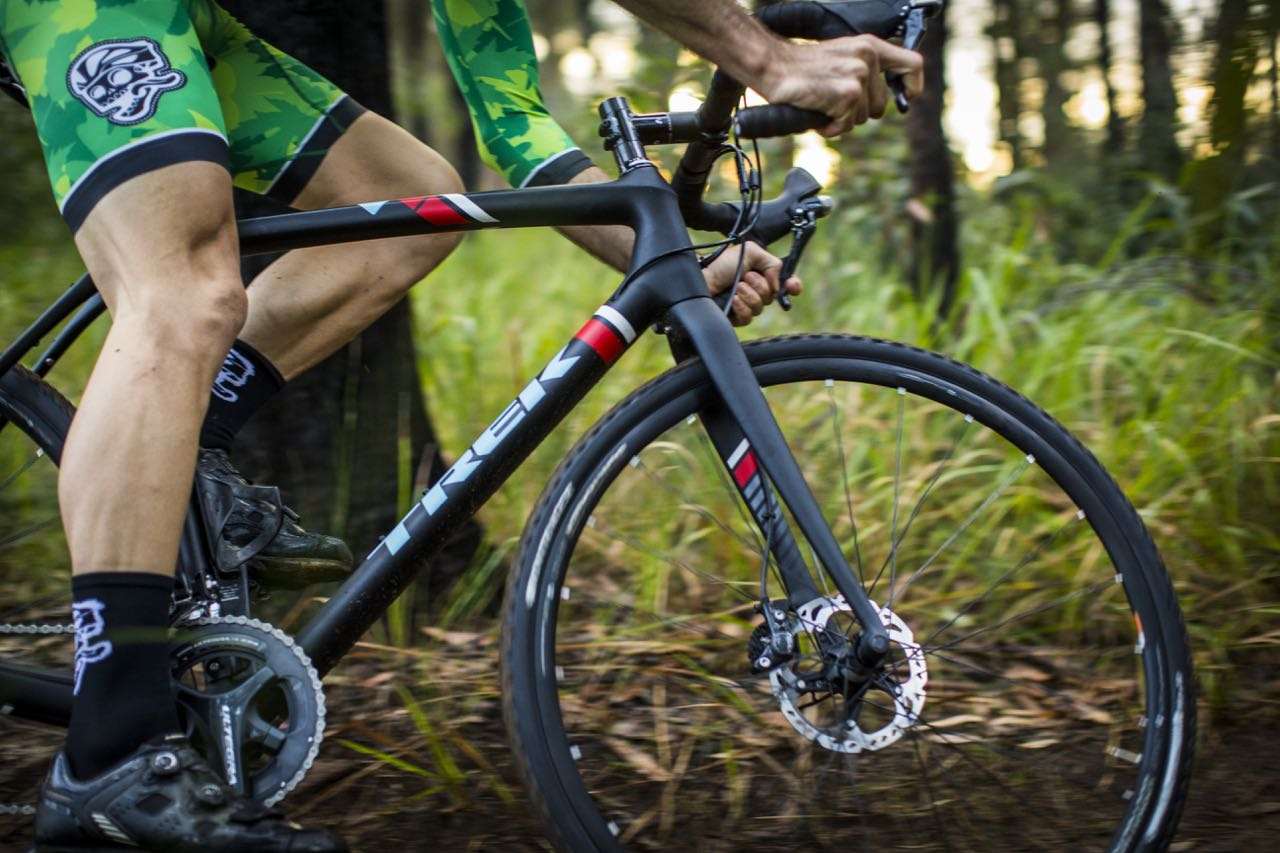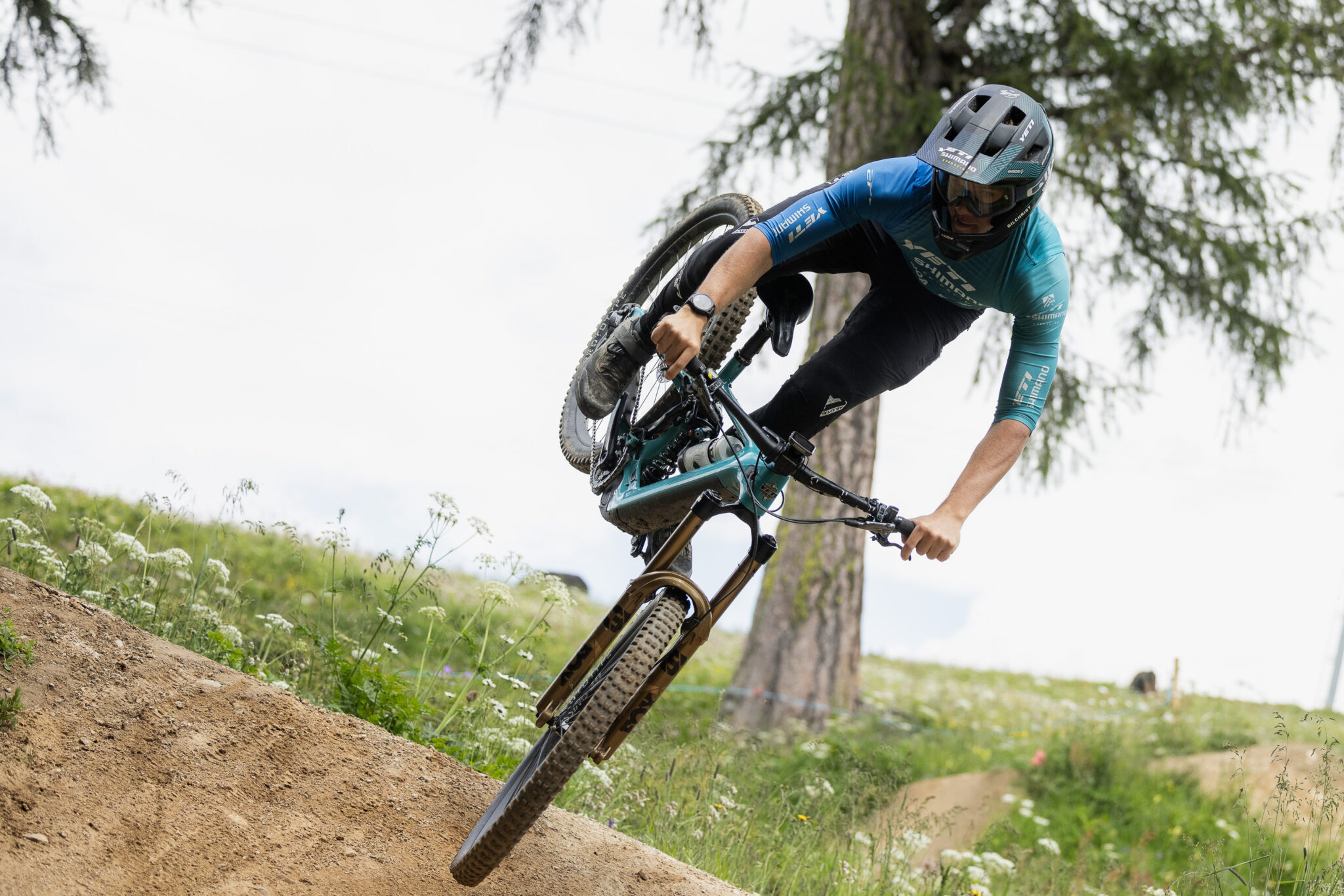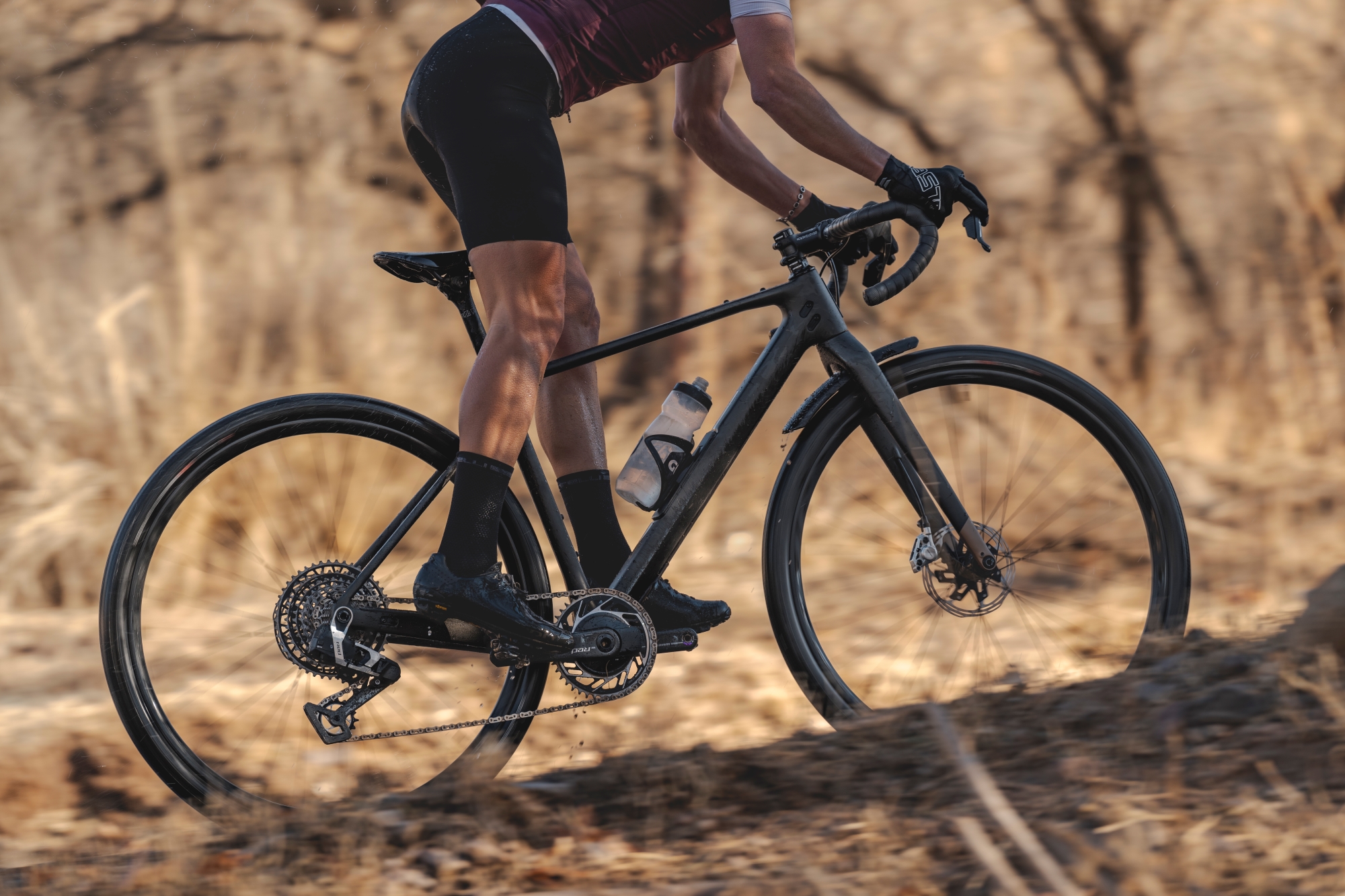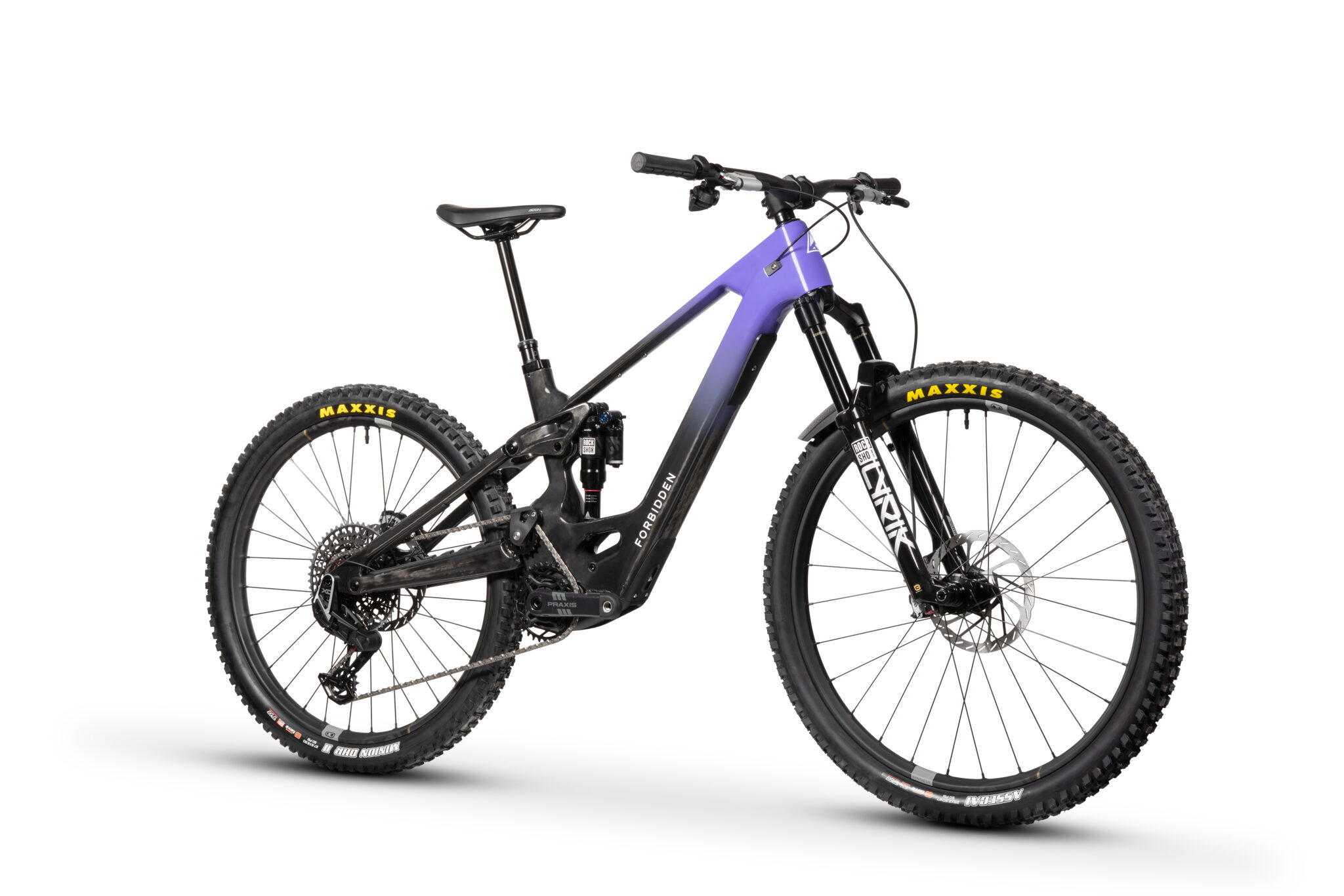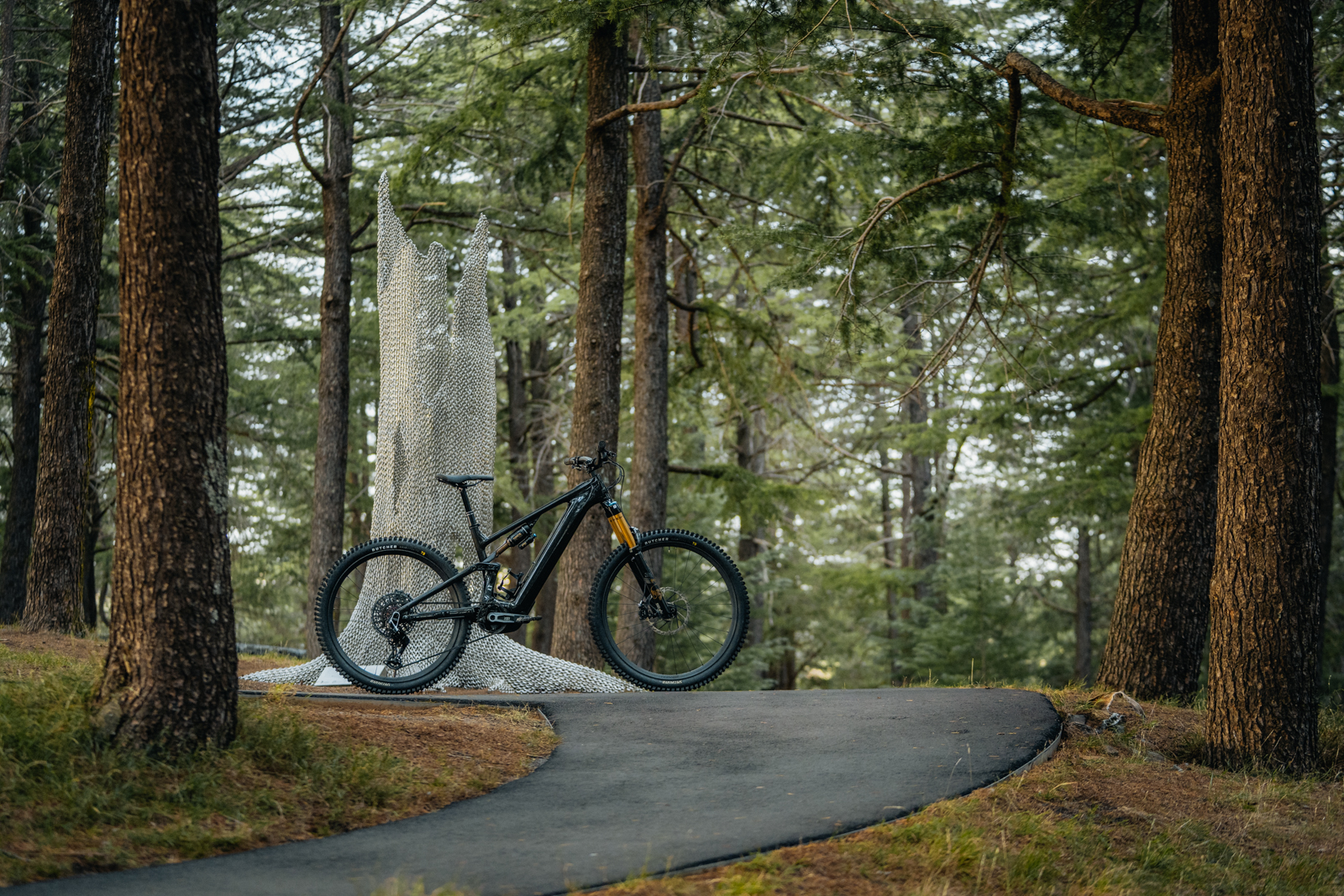TESTED: The Trek Boone 9 Disc superbike
If at first you are reeling in horror at seeing drop handlebars in AMB, relax for a minute.
If at first you are reeling in horror at seeing drop handlebars in AMB, relax for a minute. Cyclocross is not just hip, but it’s also very fun. It’s also very difficult. And it often favours mountain bikers more than road riders. There are a lot of different opinions on what cyclocross is in Austrlia – and therefore what a cyclocross bike should be. Some brand’s marketing might suggest they’re a good commuter or comfort road bike. Personally, I think cyclocross is about racing. The bikes tend to seem not quite right for anything, until you pin a number on and fill your body with lactic acid while racing around fields, through mud, over logs – or whatever the course dictates. Cyclocross is a competitive sport. And there’s nothing wrong with that.
In Australia, the cyclocross scene is often dominated by mountain bikers. Paul van der Ploeg, Garry Millburn, Chris Aitken, Chris Jongewaard, Melissa Anset, Michael Ronning, Adrian Jackson… do those names sound familiar?
So a cyclocross bike is a great extra tool for the competitive mountain biker. It really helps with fitness, but also handling. Try riding loose terrain on 32mm of rubber. It’s not easy. It takes some deft handling and finesse with body position to get the most out of the traction you have available. For a competitive mountain biker, a cyclocross bike makes a perfect addition to your shed – a perfect bike for the N+1 argument.
The Trek Boone 9 Disc sits near the top of the Trek cyclocross range, bested only by the Di2 model. Ridden by cyclocross phenom Sven Nys, the carbon fibre Boone is a recent addition to the Trek line. It’s also the race whip of choice for Garry Millburn, who raced for Australia at the UCI Cyclocross World Championships last season, and is currently in the USA after BC Bike Race, preparing for the upcoming US and European ‘cross season.
Trek call the Boone their cyclocross superbike, claiming it is their “fastest, smoothest, and lightest Cross bike ever.” Well, let’s see.
Initial Impressions
The Trek Boone arrived at AMB HQ in a tall bike box. The frame uses an integrated seat mast, like their road bikes, that needs a taller box. When built, it makes for a very sleek looking bike, and one without the same ability for crap to get into the frame. The box was also super light to pick up.
Looking over the bike, the attention to detail on the full carbon fibre frame and fork was second to none. Trek have been making bikes with their OCLV (Optimum Compaction Low Void) process for over 20 years, and use the 600 series carbon for the Boone. Where the tubing could be oversized, it was massive. The down tube flared to cover the whole BB90 press fit shell, and encapsulated the tapered head tube at the other end. The top tube is flattened, and has a slight arc which not only had it easier to shoulder, but should add to the ride compliance.
That tubing shape works with the IsoSpeed decoupler Trek introduced to their road bikes, and now mountain bikes, as a way to separate the ride tuned seat tube from the forces that come through the seat stays. The Boone is a perfect bike to move the technology to, as a ‘cross bike is not particularly forgiving for the most part. The seat stays are very slender, and do away with any bridge above the wheel, as much for mud clearance as more compliance. There are some hidden mounts underneath the stays, and above the drop outs, ready to mount mudguards if you choose to commute on this bike.
Plenty of MTB technology finds its way to the Boone, like the 15mm front thru-axle setup on the IsoSpeed tuned fork, the thru-axle in the rear – and of course hydraulic disc brakes! In cyclocross, disc brakes haven’t always found favour in the elite European ranks. In part, as the UCI banned them, but also because in a race, you want to go fast. Disc brakes often have too much braking for a corner, and the top racers might be similar speeds on the straights, but races are won by those who can take the most speed through corners. A brake with a lot of clearance for mud, and just enough power to scrub some speed is the best choice. More than that, cable discs are no fun in the mud. They don’t self adjust, and you need to have the static pad so close to the rotor that you get a lot of rubbing. The introduction of hydraulic discs have made a big difference, and now the UCI have deemed them legal to use in their races, they are making inroads.
The whole group set was Shimano’s latest Ultegra group, 6800. Think of it like road Shimano XT. With a 2×11 setup, the range was really good with the stock 36/46 chain rings and 11-28 cassette. You could go lower, or higher if you wanted – but this range was great for the intended purpose.
With some Shimano XTR Race pedals fitted the bike, the Boone was 8.39kg. That’s about the same weight as my road bike to be honest!
On The Trail
So if a ‘cross bike is a race bike, but there isn’t a race on, where do you use it? Having used a ‘cross bike in a marathon race before, I’ll happily admit that’s not very fun. You’re never as fast or as comfortable as you think. You go fast just so you can finish and get off the damn thing. But if you have a lot of buff, fast singletrack, or rough dirt roads nearby – then you start to have some good ‘cross terrain.
I was on a 56cm Boone, but given the time at a dealer, I would have tried a 54cm with a longer stem and run at the maximum extension of the seat mast. Fit is something any Trek dealer will sort out for you. Like on any bike, proper setup and sizing is crucial. Regardless, the bike was very comfortable. The hood shape on the Ultegra shifters blended seamlessly into the Bontrager bars, and the fairly shallow drop made moving from the hoods to the drops very easy. I tend to prefer the drops for descending, as it’s a more secure feeling, and gives more braking power if you’re using rim brakes. While the power was there in the hoods thanks to the Shimano hydraulic disc brakes, the drops were still my preference, and the bike felt very secure, whether descending a fire road, cornering on singletrack, or moving quickly down a road descent.
Trek have tweaked their ‘CX racing geometry’ with feedback from their sponsored racers. What’s that mean? Well the front is stable with a taller head tube than a road racing bike, also in part to the longer fork required. The chainstays are fairly short at 425mm, but that’s longer than a road bike as you need the mud clearance. The seat and head angles are sharper than your mountain bike (typically), and the bottom bracket has a bit less drop. This keeps pedals out of the way for pedalling in corners, the steering sharp, and an easier transition out of the saddle to really stomp on the pedals. The Boone is actually pretty long and low compared to some ‘cross bikes, and with the IsoSpeed decoupler it makes for a stable and planted ride.
These are subtle differences compared to a bike that would be a ‘gravel grinder’, like the Salsa Warbird we tested last year. That style of bike is usually a little longer in the top tube, a tiny bit slacker in the head and seat tube, with a bit more BB drop for stability, not agility. They are small changes, but cumulatively create a different riding bike. However the slightly slacker handling of the Boone compared to other race-bred ‘cross bikes means it may well span a broad gap. That’s pretty handy if you’re trying to justify an N+1 bike, and not an N+2 or 3. Gravel bike, distance tourer, commuter, road training… it’s all within the realms of capability for the Boone Disc.
The Bontrager wheels are tubeless comaptible, and that would make a great upgrade. As it is, the IsoSpeed frame and fork make the Boone the most comfortable ‘cross bike I have ridden, but being able to drop the pressure of the tyres without the fear of a pinch flat, and gaining more traction, would make a similar difference again. Otherwise, the wheels never caught my attention. Stiff, responsive, strong and round. Exactly what you want in any wheel.
The Ultegra 6800 group set is wonderful. The light shift action is akin to the move from 10 to 11 speed XTR, and what is felt with the new XT M8000. The cable pull ratios have been tuned, so that with new slicker cables, the shift action is far lighter. Of course, fully internal cable routing in the Boone will keep this shifting nicely for a long time to come. Internal cables aren’t always favoured for ‘cross racing due to the extra faff when replacing them, but Trek have sealed the frames exceptionally well, so the chances of rapid cable degradation seem minimal.
In the age of 1x group sets off road, chain security on any setup can be a valid concern. Trek have a nifty inbuilt chain guard that mounts at the bottom of the seat tube. I didn’t drop a chain, and this little piece of engineering will keep it in place and not wrapping itself around the BB shell. That’s great for performance, and for frame longevity.
Having a disc brake on a ‘cross bike was a game change in confidence. But it’s also a whole lot of braking power through to a small contact patch. There are a couple of options here if that was a concern. One would be a switch to 140mm rotors, or to be running a larger tyre tubeless. I’d say you could squeeze 40c on the front and maybe 38c on the back. This isn’t UCI legal, but it might work for your riding and requirements. It really just took a ride or two to figure out I only needed a feather touch on the levers to get all the control I needed. And it made riding the ‘cross bike along some of my local trails far more enjoyable than on my own antiquated ‘cross rig.
Our Take
The beauty of a cyclocross bike, for me, is the sport involves everything I’m bad at. Fast starts, high intensity, quick dismounts and remounts, and bike handling with sub-optimal traction. If you’re performance minded you are likely to get a lot out of having a cyclocross bike in your shed. Be it for some big dirt road miles, or preferably for your local ‘cross races or ‘cross bunch ride. The Trek Boone truly is a super bike when it comes to cyclocross. There’s a Di2 model above this, one, and a few models below that change to alloy frames and lower group sets – but this bike was a joy to ride, and lived up to Trek’s marketing of being smoother and faster than any other ‘cross bike I have ridden before. I would happily consider adding this bike to my collection. If you’re after something to be more of a training tool and commuting workhorse, this is still a great choice, but the Boone 5 Disc at $3899 is also worth looking at to keep the cost of entry a bit lower, but keeping all the key features.

